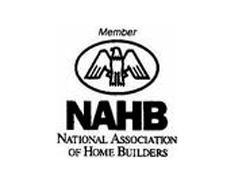Baby Boomers Still Prefer Suburbs and Cul de Sacs
Washington, DC, February 16, 2016—Homebuyers in the Baby Boom Generation want a suburban neighborhood consisting of all single-family detached homes more often than any other community feature (of the 19 listed), and nearly 80% prefer a cul de sac over efficient traffic flow when given the choice, according to the results of the National Association of Home Builder’s (NAHB) Housing Preferences of the Boomer Generation.
These results are based on a survey conducted by NAHB in September 2015 that collected data from 4,326 recent and prospective homebuyers, stratified and weighted to be representative of the age, geography, income, and race and ethnicity of homeowners in the U.S. Although the published study emphasizes housing preferences of Boomers (those born from 1946 to 1964), for comparison purposes the survey also captured buyers in other generations (including Millennials born in 1980 or later, Gen X’ers born 1965 to 1979, and Seniors born in 1945 or earlier).
For homebuyers in the Boomer generation, the most desired of these features is a “typically suburban” community (defined as consisting of all single-family detached homes) rated desirable or essential by 70% of Boomer respondents. After that comes a group of three community features rated essential or desirable by 61% to 64% of Boomers: being near retail space, a park area and walking/jogging trails.
At the other end of the scale, tennis courts, high density (defined as smaller lots and attached/ or multifamily buildings), other mixed use (homes near office or other commercial buildings, to distinguish it from homes near retail space like grocery or drug stores), a golf course, baseball or soccer fields, and daycare center are relatively unpopular, each being rated essential or desirable by fewer than one-fifth of Boomers.
Compared to buyers in other generations there are many similarities in the way Boomers rank the top community features. Seven community features (typically suburban, park area, near retail space, walking/jogging trails, a lake, swimming pool, and exercise room) make the top eight irrespective of the homebuyer’s age.
The main generational differences in the rankings are 1.) playgrounds are particularly important for buyers in the Millennial generation, but fall entirely out of the top eight for Boomers and Seniors; and 2.) an outdoor maintenance service becomes relatively more important for older buyers, moving all the way up to number five on the list for Seniors.
Another section of the NAHB survey asked homebuyers about street design trade-offs, which can be useful in helping inform land planning decisions. A number of advocacy groups (e.g., the National Complete Streets Coalition) recommend interconnected streets for efficient traffic flow, implying that designs like cul de sacs that seek to limit through traffic should be avoided. But homebuyers in the Boomer generation have the opposite opinion: 78% prefer the cul de sac or other street design with limited traffic flow—more than triple the 22% who prefer the alternative of a home on a continuous street with more efficient traffic flow.
